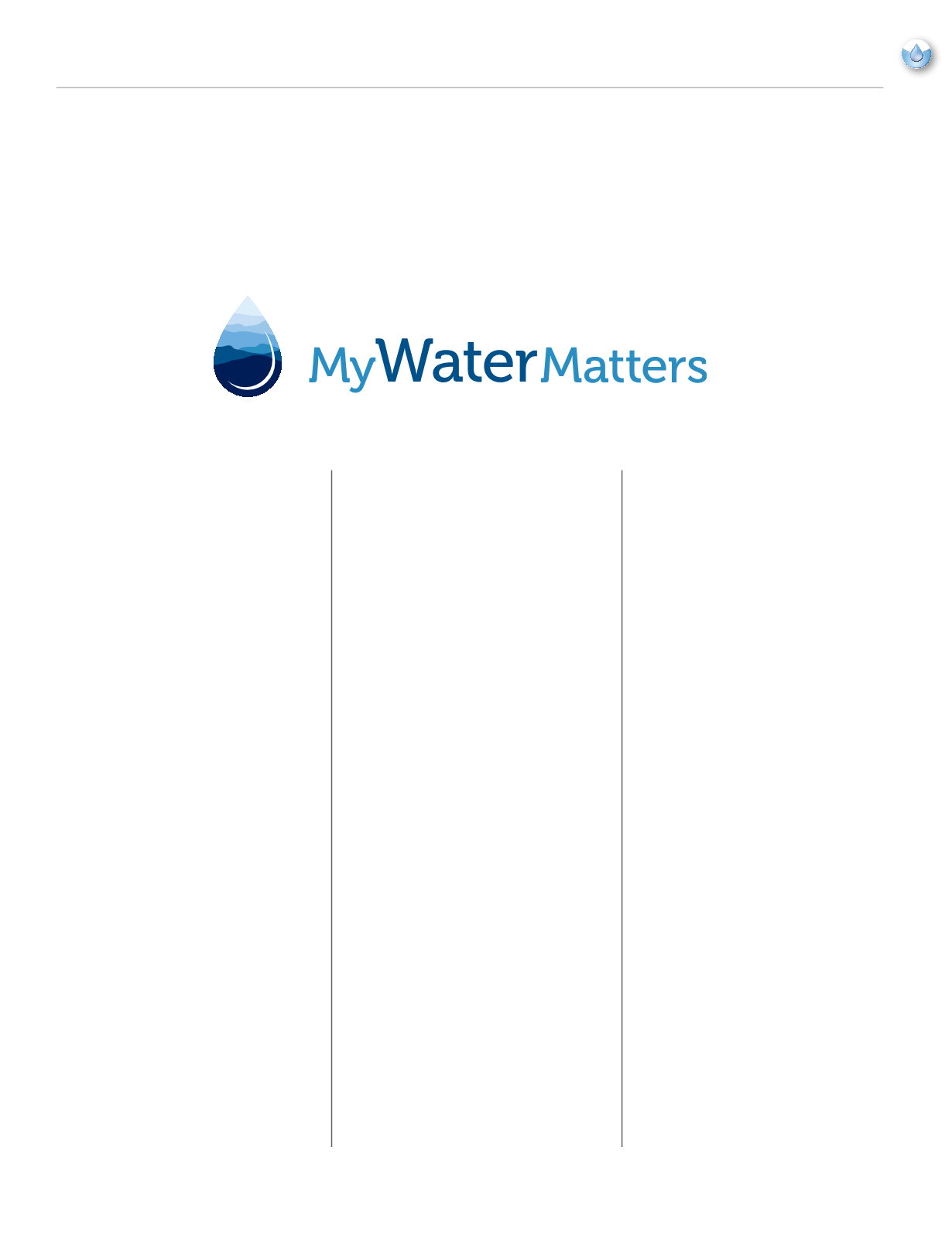
D
uring a meeting in November 2010, the
NC Waterworks Operations Association
(NCWOA), the North Carolina Rural
Water Association, Inc.® (NCRWA) and
the NC AWWA-WEA decided to work
together to launch a joint public education
campaign. “The driving issue was to
improve communications among the
organizations,” explains Daniel Wilson,
Executive Director of the NCRWA. “In
order to better serve our members, we
determined that we would work on
initiatives that we could more effectively
accomplish and fund collaboratively than
as separate entities.”
The NC AWWA-WEA Board of Trustees
Chair Jackie Jarrell tells a similar story.
“For a long time in our Association, we
had been talking about the need to work
with the other associations,” she concurs.
“We all want the same thing, but we are
all trying to do it ourselves. If we work
together, we will have the resources to be
able to do more.”
One of the first agenda items for this new
collaborative effort was raising awareness
among the citizens of North Carolina of
the value of water and the challenges local
utilities face. “We started to realize that
the biggest piece that all three associations
struggle with is that no one knows we exist
as professionals,” says Leslie Carreiro,
Executive Committee Past President for
the NCWOA. “We have this huge impact
on public health but the general public
does not even know what wonderful skills
we have or that there are careers available
in the industry.”
The two biggest challenges in moving
forward with the Public Education
Campaign proved to be honing the message
to be delivered and then deciding how to
deliver it. In June 2011, representatives of
all three associations received a marketing
plan from professional facilitator Linda
Vaughn to create a Public Education and
Marketing Plan. From the plan, the three
associations identified three succinct
messages they would strive to deliver: 1)
The value and cost of water, 2) The care of
water is everybody’s job, and 3) Water is a
career that is exploding with possibility. It
was also agreed that, as there were already
many programs aimed at the school-aged
population, the target audience for the
public education campaign would be in the
age range of 18 to 55.
“Many people do not have an
understanding of what it takes to provide
clean water,” notes George Simon, Chair
of the NC AWWA-WEA Public Education
Committee. “Water is free, but clean
water is not. Once you do start to engage
the general public, they do find it quite
interesting and get engaged quickly.” The
question that remains is how to make sure
the selected messages reach them.
Among the many ideas identified for
delivering these messages, the joint
committee decided to focus on two:
creating a joint public education website
and producing two public service
announcements as content. The three
associations signed a Memorandum of
Understanding to work together on these
initiatives and share the costs equally. “We
then realized that as committee members,
we had neither the time nor the skill to
move forward ourselves with what we had
decided,” recalls Carreiro.
A Task Force was formed consisting of
two members from each association. The
team then hired one company to gather
footage and produce two PSAs, and
another company to create the website
. The videos
are currently posted on the website along
with a list of upcoming industry-related
events and links to all three association
websites as well as to links to information
about careers and other resources. One of
the videos is also posted on YouTube at
.
A Stronger Voice for Water
Associations Launch United Effort to Strengthen Messaging
Winter 2014 |
NCRWA.COM
17
feature


